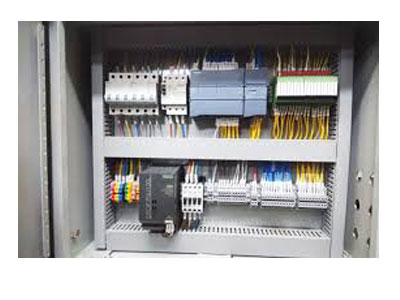What Are NO And NC In Relays?
Key Takeaway
In relays, NO (Normally Open) and NC (Normally Closed) describe the state of the contacts when the relay is not activated. NO contacts remain open and non-conductive when the relay is off. When the relay is activated, the common terminal connects to the NO terminal, closing the circuit and allowing current to flow.
NC contacts, on the other hand, are closed and conductive when the relay is off. Activating the relay opens the NC contact, breaking the circuit and stopping current flow. NO contacts are used for functions like machine start buttons, where the circuit closes only when powered. NC contacts are used in safety systems, like emergency stop buttons, to maintain the circuit until the relay is triggered, ensuring safety by cutting off power when needed.
Definition and Differences Between NO and NC Contacts
Relays are essential components in control systems, and their operation hinges on the configuration of contacts. Contacts in relays can be set as either Normally Open (NO) or Normally Closed (NC), which significantly affects how the relay interacts with the circuit it controls.
Normally Open (NO) Contacts: These contacts are open when the relay is not energized. They close when the relay receives an input signal, allowing current to pass through and completing the circuit.
Normally Closed (NC) Contacts: These contacts are closed when the relay is de-energized. When the relay is energized, the contacts open, interrupting the circuit.
Understanding the differences between NO and NC contacts is vital for designing circuits that respond accurately to control signals and safety requirements.

Role of NO Contacts in Control Panels
NO contacts are used in applications where a circuit needs to be activated only when the relay is energized. When the input coil receives an electric signal, it energizes the relay and pulls the contacts together, creating a path for the current to flow. This action is ideal for starting motors, triggering alarms, or turning on lights.
Key Points:
Provide control for circuits that need activation only when conditions are met.
Essential for safety systems that require switching on when a condition is met, such as emergency lights or motor operations.
Role of NC Contacts in Control Panels
NC contacts play an essential role in circuits that need to be active when the relay is de-energized. They are typically used for fail-safe or safety applications, where the default state of the circuit should be closed, ensuring continuous operation unless interrupted.
Key Points:
Ideal for circuits requiring a continuous connection until a specific condition disrupts it.
Used in safety systems to maintain a circuit until a control signal switches it off, such as in emergency stops or alarm systems.
Practical Examples of NO and NC Usage
Examples of NO Contact Usage:
Motor Start/Stop Circuits: NO contacts are used to start the motor when a button is pressed.
Lighting Controls: Lights that turn on when a switch is activated.
Examples of NC Contact Usage:
Emergency Stop Buttons: The circuit remains closed until the button is pressed, cutting off power to the machinery.
Temperature Monitoring: NC contacts open when a temperature threshold is exceeded, disconnecting power to prevent overheating.
Importance of Configuring Contacts Correctly
Configuring the contacts properly is crucial for reliable and safe circuit operation. Misconfigurations can lead to malfunctions, unsafe conditions, or equipment damage. NO and NC contacts must be chosen based on the intended function within the system, considering the default state, safety needs, and operational requirements.
Conclusion
Understanding the roles and differences between NO and NC contacts in relays is essential for designing effective control systems. Whether you need a circuit to remain open until activated or one that stays closed until interrupted, choosing the correct configuration ensures reliable performance, enhances safety, and maintains operational efficiency in various applications.

